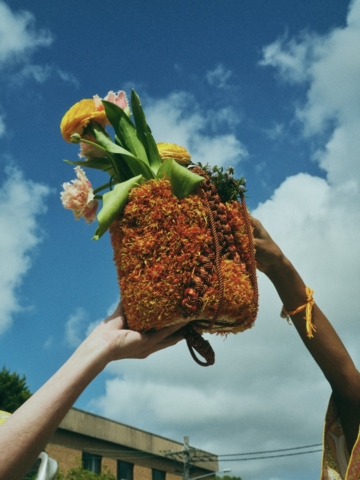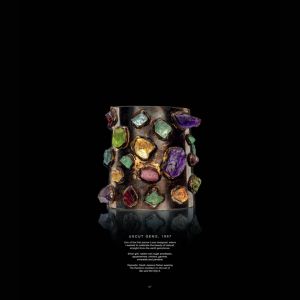Youth Shoes
By Louis Lefaix
Teenage angst, like being worried about the person you liked not liking you back was part and parcel of the rituals of leaving childhood and navigating your way towards being an adult. Looking where you belonged and being part of something helped often ease the transition. One way through the journey would have been to ‘join a tribe’ to look and dress like those around you could have given a sense of belonging. The very clothes, shoes, haircuts and accessories worn worked as signifiers to others that you were part of something. Find out more about how footwear in particular has helped many a teen walk the path towards maturity, here in Youth shoes.
Did you know that the teenager isn’t even 100 years old? In fact, it was only ‘democratised’ in the 1950s from whence it boomed.
The term ‘teenager’ was officially coined in 1941, and by 1944 Americans used the word ‘teenager’ to describe the place of youth in their society. From the very beginning, it was a marketing term that recognised the spending power of adolescents. The magazine Seventeen printed its first issue in 1944, showing off young teenager-targeted clothing and interests.
The teenager emerged in America thanks to the post-war economic boom. Families started to afford to have their children stay in school rather than leave in order to help provide for the family. Work and wages were for the first time plentiful for all and children no longer on the whole needed to add to the family income.
The rise of compulsory school also accentuated this. This gave teenagers the opportunity to be their own sub-culture rather than become young adults through labour. The group flourished with this new spending power and independence. Post-war was a time of life and joy, recovering from what had been stolen by the War. Teenagers were actively embracing the modern world one that was arriving as a deep departure from their parents.
The dress code was key for the teenager; a way of identifying yourself outside of the family. It was wanting to look cool rather than dressing for utility often about belonging to the ‘friendship group’ even if it was a subset.
Attire represented a status symbol, a way of rebelling and a means of uniting. The group they would associate with could be recognized by what they all wore. This was magnified by shoes. There were, and still are, key shoes that have been staples for the teenager, from saddle shoes via brothel creepers, Loafers to Doc Martens.
The emergence of teen culture in the late 50s and 60s saw shoes reflect this post-war freedom and youth. As a result, the global footwear industry grew at an incredible rate in the 1950s, and production records were broken nearly every year during the decade.
A number of shoes that had first been created in the early 20th century, got a serious breakthrough in the 40-50s thanks to this growth of the industry and the emergence of the teenager. So much so, that many of them are still prevalent to this day.
The saddle shoe was one of these revolutionary designs that was popularised in this era. Its first design appeared in 1906, footwear designer A.G Spalding originally designed the shoes for indoor use. In fact, the lightweight shoes were intended for interior sports. But ultimately they were worn recreationally outside.

It is easily identified by its signature contrasting-coloured leather ‘saddle’, it is a separate piece of leather cut and sewn over the waist of the shoe. The colourways most typically were black over off-white leather uppers and navy over white. The shoe gained popularity and by the 1930s, it became an integral part of many ‘informal’ school uniforms.
In the 1940s, teenagers paired the model with ankle socks called “bobby socks”. The term “bobby soxers” was coined by the media to refer, to this group of teenage girls. The shoes’ popularity kept growing up until the 1950s, and by then it had become synonymous with youth. Although born in the United States of America, it quickly transformed into an international phenomenon.
Loafers are the descendants of one the oldest forms of footwear. They were first invented by North America Indians. They used to bandage their feet with pieces of deer skins, extremely soft but also very resistant, in which a very flexible sole was included.
The Lapps a Norwegian community of milkers and fishermen also adopted this type of shoe. And they improved the design with time.
Allegedly some students, travelling to Scandinavia in the early 1900s, spotted Norwegian fishermen wearing a simple, comfortable type of shoe. They brought the style back to North America, where it spread until reaching industrial production.
Sure enough in 1936, the American company GH Bass launched on the market the “Weejun Loafers” shoe. “Weejun”, short for Norwegian, while Loafer stands for “shirker”, which means to “avoid work”, to ‘loaf’ about. This also refers to how easy loafers were and still are to slip on.

The model also included a strip of leather across the front of the shoe, with a slit the perfect size to fit a round and flat object, such as a penny. So it was baptized the ‘penny loafer’.
Once again, the shoe was particularly popular with teenagers. Its popularity was further amplified by public figures. In fact, James Dean, Buddy Holly and Elvis Presley were enjoyers of the pair. But, it was Fred Astaire that really popularised the shoe. The actor and dancer would wear them while performing tap dancing.
The “Penny Loafers” were essential for teenage footwear. Paired with white socks it gave the “Ivy League” look. This style of men’s dress was then characterized by a clean-cut preppy style almost European. It is said to have originated on college campuses, especially those of elite American universities. The essentials were chino trousers, oxford shirts, blazers and sports coats.
Around the same time an iconic shoe emerged in the United Kingdom. They were originally worn in the North African deserts, by British soldiers in World War Two. But they returned home with the soldiers to post-war England. These thick-soled crepe boots started gaining traction.
Denson and Ladd’s and other shoe manufacturers took inspiration. And soon enough the “Brothel creeper” or simply “creeper” was born. It was first produced under the “Hamilton” name by George Cox in 1949.

The nickname “Brothel creeper” is said to come from the number of soldiers in the capital that wanted to experience some fun after years away fighting and found themselves in the back streets of Soho, seeking adult entertainment.
Others say it got its name from a Ken Mackintosh dance tune popular in 1953 and called “The Creep”. The shoe was associated with the youth scene known as the teddy boys. This British teenager subculture was denoted by its Edwardian-inspired dress. The attire included drape jackets, high waist “drain pipe” trousers, and a high necked loose-collared white shirt.
The shoe and attire signified appurtenance to a gang. This form of rebellion wasn’t as pacifist as the previous. Mobs from different areas such as the Elephant mob and Deptford (in London) would engage in violent confrontations. Moving to the 1960s, the pair of shoes was also adopted by other groups such as rockabillies an almost subculture of the original gangs.
Klaus Maertens a German creator designed a new air-cushioned sole for his boots to support his broken foot in 1945. In 1947, He began production of the shoe with his classmate Dr Herbet Funk. From there on the boot kept gaining traction.

In 1960 it made its international breakthrough. Bill Grigg from Northampshire brought the license to use Maertens’ cushioned sole for production. He went on to make the famous “Dr. Martens 1460“. The model is so called for first being produced on April 1st, 1960 (1/4/60). It quickly became a sensation.
They were first intended and used for workwear. But Pete Townsend The Who’s guitarist turned them into a cultural phenomenon. The shoe was also harboured by other bands such as The Clash, Sex Pistols, Madnes and many others. As a piece of footwear in many ways it stood for rebellion and was quickly adopted by many subcultures including skinheads, mods, punks, goths, fans of grunge, glam and many more.
The boot is one of the most famous and iconic shoes in the world. It is still as successful today, a new collection is about to be release. Dr. Martens Ocelot is set to release in April. Three silhouettes will feature the Ocelot Print Hair-On Leather, Jorge Ocelot TBC, Adrian Ocelot TBC, 1461 Ocelot TBC.

We can’t mention shoe culture without touching on trainers or more known by their Amercian name sneakers. During the first decades of the 20th century, sports shoes were normally worn to engage in actual sporting events. But, teenagers in the 1950s began wearing them as fashion statements.
Converse is without a single doubt the most iconic sports shoe. It was founded in 1908 in Malden, Massachusetts, as a rubber shoe company specializing in goloshes. The iconic Converse All-Stars debuted in 1917, and everyone from actors and musicians to professional basketball stars started sporting the shoe.
In 1923, an Indiana hoops star named Chuck Taylor endorsed the shoes, and they became known as Chuck Taylor All-Stars. They became and still are the best-selling basketball shoes of all time.
Converse’s golden era spanned from the 1940s and the 1960s when it became the most popular sneaker for any athletic activity. But they were also worn outside the gym, especially by teenagers to make a fashion statement.

To this day they are still relevant and questionably the most prevalent sneaker of all time. In fact, a pair of Converse’s iconic Chuck Taylors is sold every 2.5 seconds, which amounts to about 100 million pairs a year. Available in a rainbow of colours makes them very popular.
Vans is another sneaker that was synonymous with youth culture. The original deck shoe was created in 1966 by two brothers, Jim Van Doren and Paul Van Doren. The shoe was intended for skateboarding, and so it flourished in the scene. It is to this day almost certainly the most popular skate shoe.
If you hold an interest towards the skateboarding scene, you may enjoy Woolf Women. This self-filmed diary follows a group of five downhill boarders who take the open road and skate wherever they find an opportunity. Join Jenny, Anna, Jasmine, Lisa and Alejandra on their adventures. The film’s World Premier will take place on 29th March 2023, at the Picturehouse Cinema, Finsbury Park.

Sneakers’ importance has grown in culture throughout the decades. It has come to today’s era of collecting ultra-limited collaborations. The history of the sneaker has been influenced by multiple brands. But Stars have also had their impact with collaborations that marked history.
A lot of these collaborations result from athletes getting contracts with big sports brands such as Nike. The most notorious collaboration is the Michael Jordan x Nike. The Nike Air Jordan One had massive success, so much so, that Jordan later created his own brand.
2023 American biographical sports drama “Air” directed by Ben Affleck, touches on this matter. The movie delves into the story behind rookie Michael Jordan’s signing with Nike. It follows Sony Vaccaro a shoe salesman at Nike, trying to get a contract with uprising NBA star Jordan.

“Air” directed by Ben Affleck written by Alex Convery
This partnership with whom many consider the greatest athlete of all time would revolutionize the world of sports and contemporary culture. The movie features Matt Damon, Viola Davis, Jason Bateman and others. It will be screened in cinemas starting on the fifth of April in the UK.
The book Sneaker Obsession was published by Flammarion on the ninth of March with Kikikickz, France’s leading online sneaker reseller. A new book covering the history of sneakers in depth. From it start in sports, to its prevalence in Hip Hop, to its place in today’s world. It comprises the stories of the major brands, as well as the personalities behind the greatest collaborations, including Jordan with Nike and Kanye West with Bape.
Whereas shoes alongside staples likes jeans we very much the streetwear, it took a new musical run for sportwear to become the clothes of choice.
Bands up until then tended to wear converse Dr martins but the in the 1980s the world of Hip Hop changed all that.
The Afro Caribbean Americans adopted the footwear of the their ground breaking sports heroes and took to wearing sports clothing with gold making it a fashion statement. Stars like rapper LL Cool J and rap group Run-DMC popularised the look.

Sneaker Obsession, by Kikikickz published by Flammarion
But it also delves into the more recent hype culture around the Travis Scott collaborations and Virgil Abloh’s work. It contains luxury brands collaborations or own-made sneakers such as Louis Vuitton and Balenciaga. It also provides insight into how the resale market functions, suited for anyone interested to get into it. It provides a guide on how to authenticate a sneaker. And finally, it elaborates on the future of sneakers.

Whatever the choice of footwear, it was so used from the true democratisation of teenage to mark out their fashion territory and still does so today.
If you are interested in learning more about these subcultures, The Museum of Youth in Soho will be giving exhibitions throughout March on cultures of the youth such as Jungle, Rock and Goth.

The Batcave July 1983 Derek Ridgers
The Batcave exhibition is currently taking place at The Museum of Youth. London’s seminal Goth club, The Batcave returns to Soho on Wednesday 22nd -29th March for an exhibition celebrating the club that was hugely influential to the UK Goth scene.
Other events will be showcased at the museum in March. On Wednesday 29th March, the Party collective, Club Cowgirl take over the Museum, exploring the experiences of the working class in the music and creative industries.
Grab a copy of Sneaker Obsession on Kikikickz website here
Visit The Museum of Youth website here
If you enjoyed reading Youth Shoe Circle why not read Retro Style, Modern Technology here
.Cent Magazine, London Be Inspired; Get Involved





